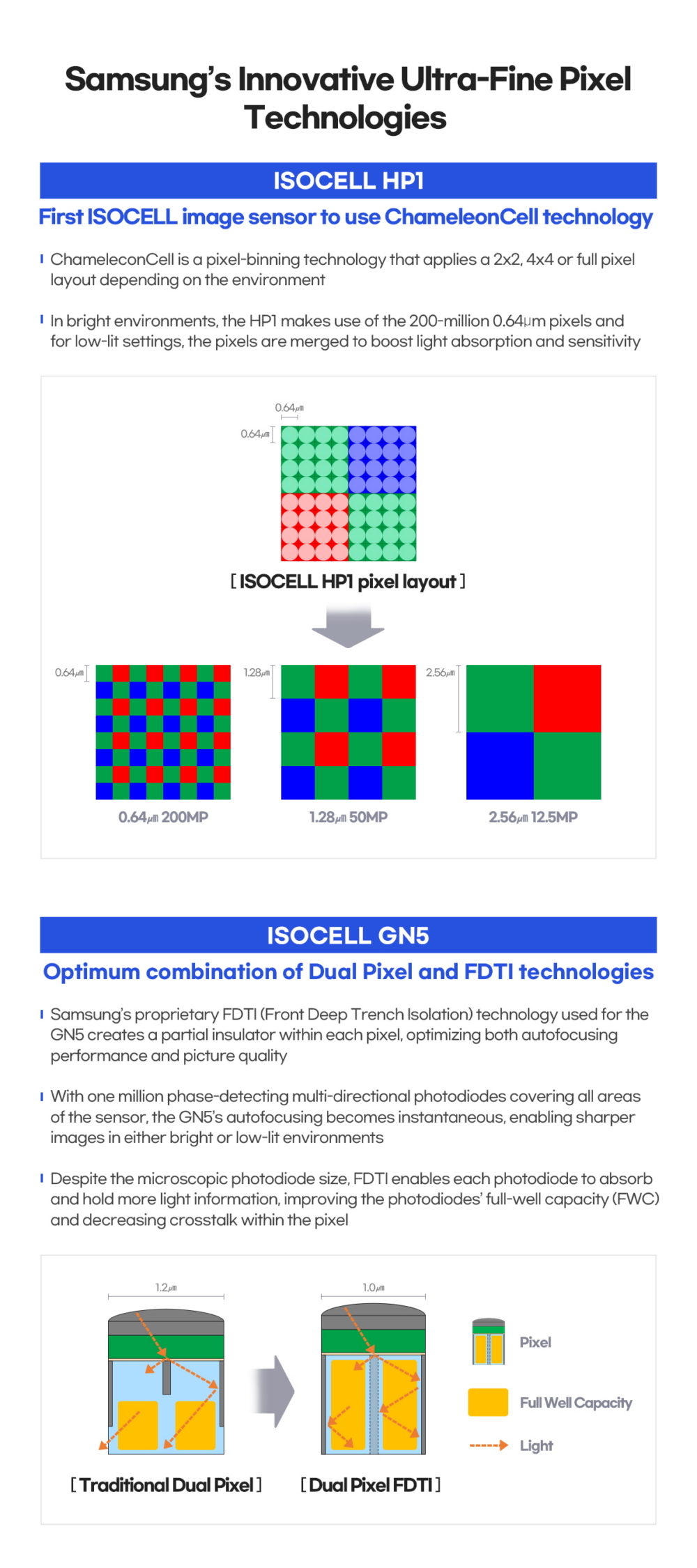In 2013, Samsung has announced its ISOCELL technology, which reduces colour crosstalk between pixels by placing a physical barrier. Which in return allow small-sized pixels to achieve higher colour fidelity. Based on this technology, Samsung introduced the industry’s first 1.0μm-pixel image sensor in 2015 and a 0.9-pixel sensor in 2017. Samsung continues to enhance its pixel isolation methods with ISOCELL Plus and ISOCELL 2.0 technologies.
ISOCELL HP1: Capture the World in Breathtaking 200MP and Crystal Sharp 8K Video
The HP1 will output at different resolutions based on the available light. In low light, it will combine pixels in a 4-by-4 binning method to achieve 12.5MP images with a large 2.56μm pixel pitch. However, in good light, the sensor can output in 2-by-2 for 50MP with 1.28μm individual pixels or even natively at 200MP with 0.64μm pixels, giving you more resolution as needed. Check Also: Samsung Galaxy Z Fold3 and Galaxy Z Flip3 are officially available for pre-order in Pakistan! With the ISOCELL HP1, pictures hold an astonishing amount of detail that helps the image stay sharp even when cropped or resized. Samsung does not reveal the size of the ISOCELL HP1 sensor. But apparently, it looks smaller than the ISOCELL GN2. At their binned resolution of 12.5MP, the GN2 achieves 2.8µm pixels, while the HP1 tops out at 2.56μm. Furthermore, the ISOCELL HP1 is capable of [email protected] video capture with minimum reduction in the field of view. It scales down the resolution to 8,192×6,144px (50MP) in order to take 7,680×4,320px (8K) video. So you do not need to crop or scale down the full image resolution.
ISOCELL GN5 is the industry’s first 1.0μm image sensor:
The ISOCELL GN5 is the industry’s first 1.0μm image sensor to integrate Dual Pixel Pro. It is an all-directional autofocusing technology that can substantially boost autofocusing capabilities. This technology places two photodiodes, the smallest in the industry. Within each 1.0μm pixel of the sensor either horizontally or vertically to recognize pattern changes in all directions. With one million phase-detecting multi-directional photodiodes covering all areas of the sensor, the ISOCELL GN5’s autofocusing becomes instantaneous, enabling sharper images in either bright or low-lit environments. The GN5 integrates Dual Pixel Pro, which is an all-directional autofocusing technology. It places two photodiodes within each 1.0μm pixel. The autofocusing pixels combine vertical and horizontal tracking to the entire width of the sensor for resulting in accurate and instantaneous focusing. Samsung says that samples of both ISOCELL HP1 and GN5 sensors are available. So we expect to see them in devices very soon. Samsung also explained how both technologies work,
Source: Samsung
